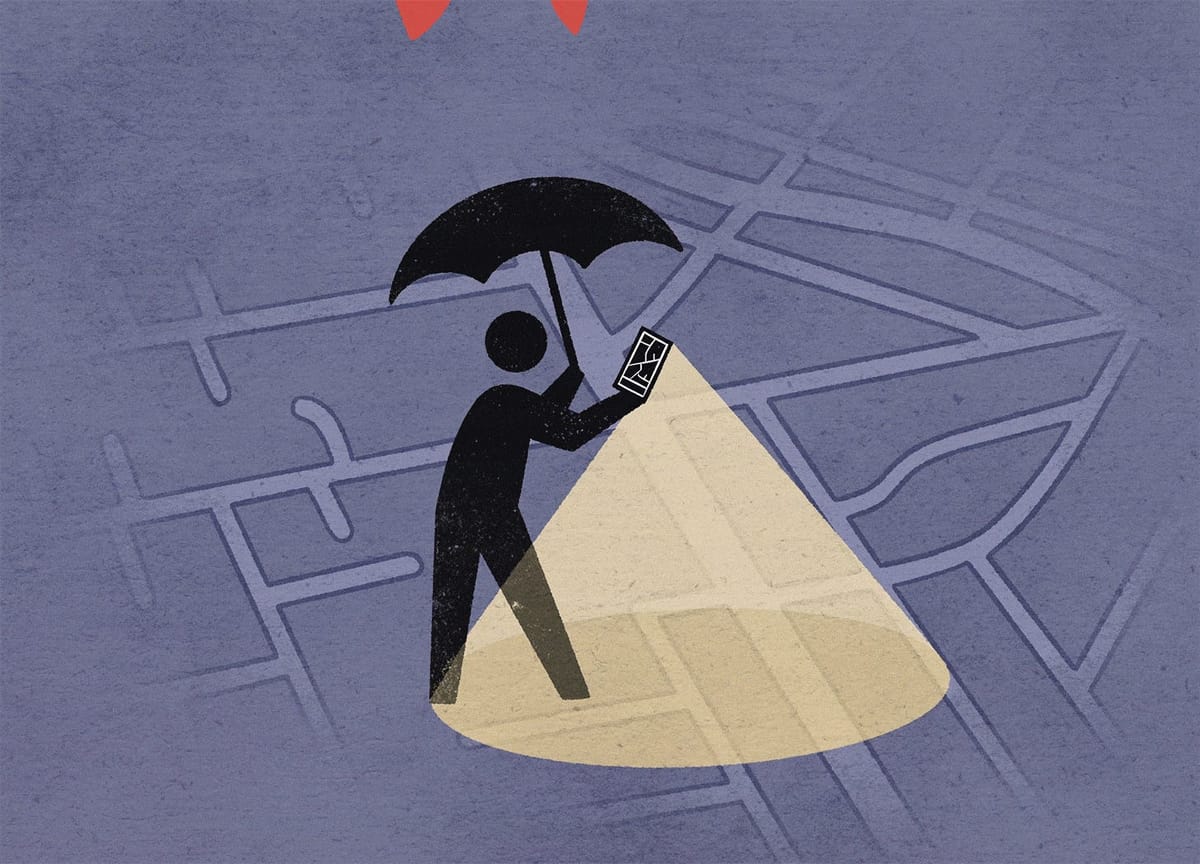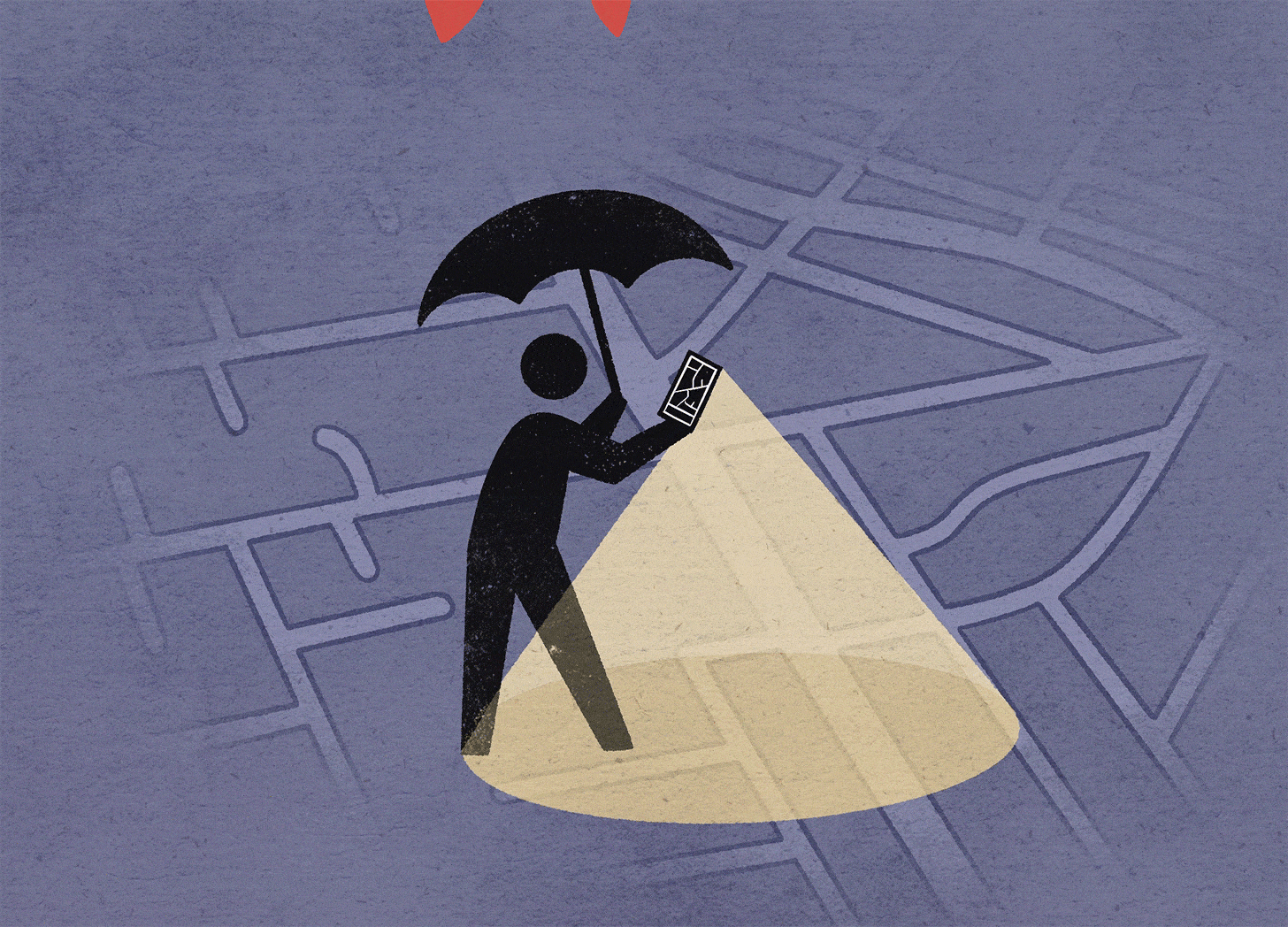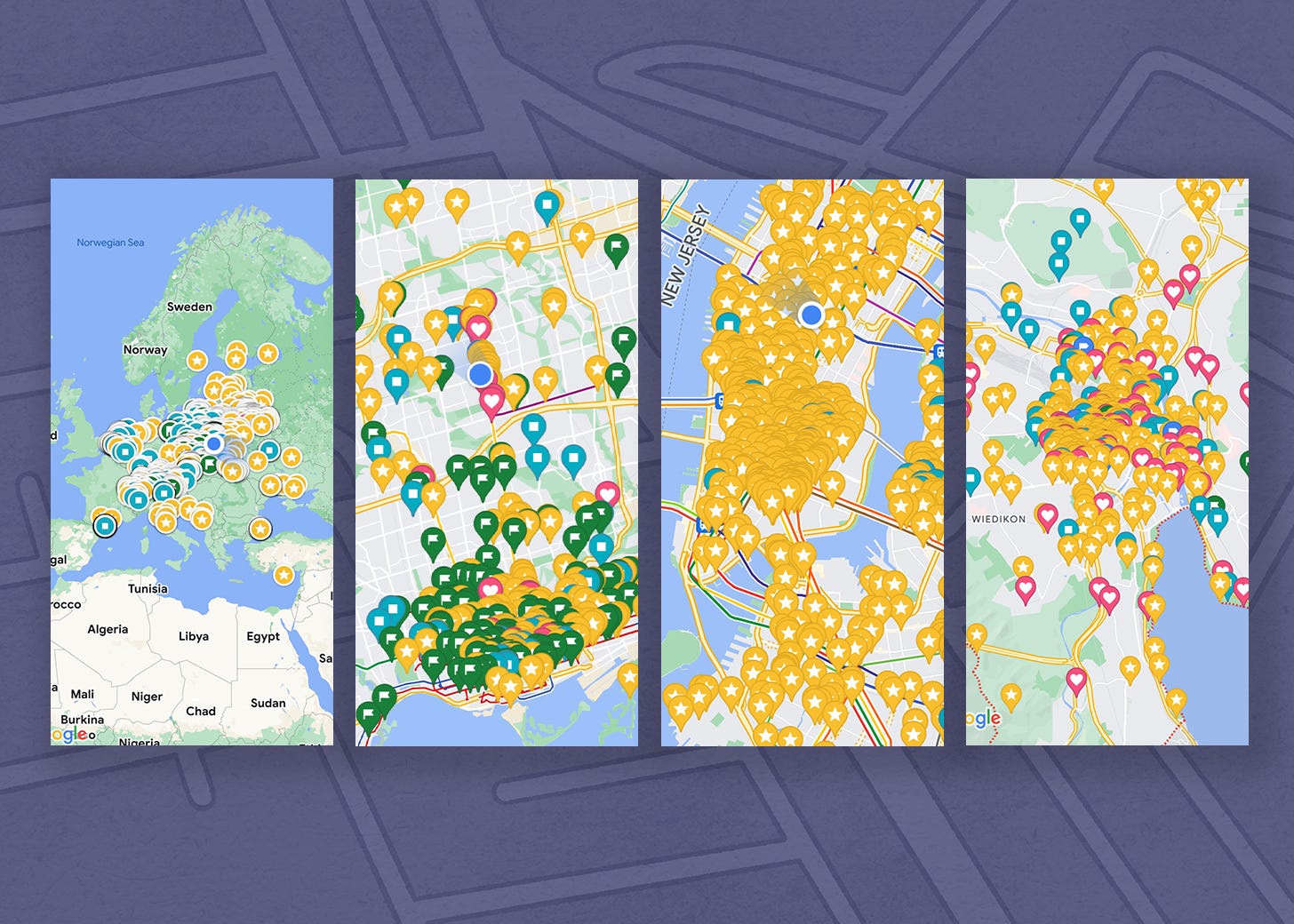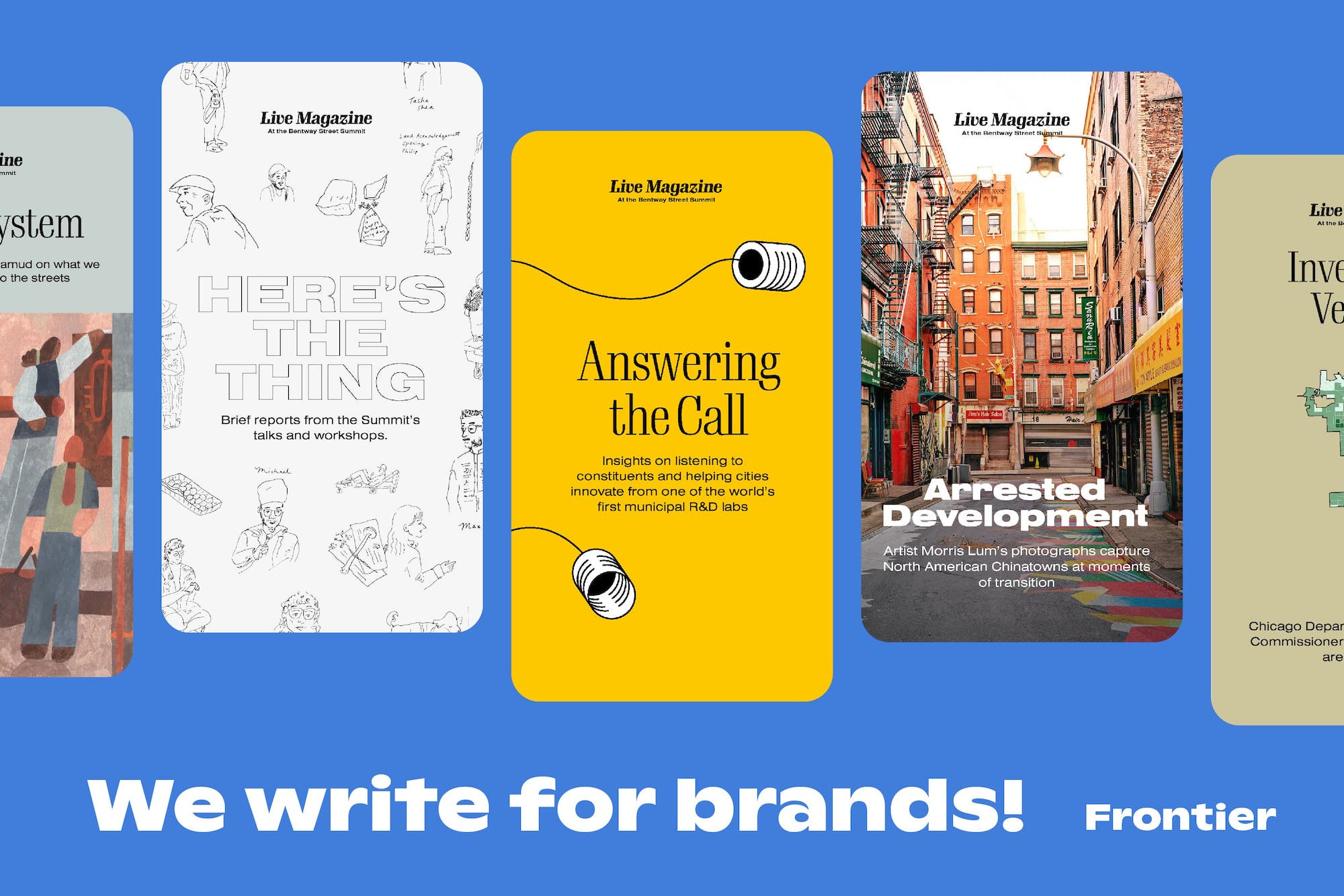Let’s Get Lost
Maps that discourage going straight to your destination

Hi everyone,
I’ve unlocked last Friday’s supporters’ update, with a short and opinionated preview of fall museum exhibitions from Los Angeles to Berlin plus the usual updates to earlier Frontier Magazine issues. Click through to learn about great institutions that are under-appreciated outside the art world.
Two stories this week. One is on the limitations of Apple Maps and Google Maps, with pointers to apps and projects that offer other ways to explore and curate the city. The other offers some information about Are.na, the online platform and community for which we’re hosting a small party at our offices on Saturday, September 9. That event is framed as a meetup for Are.na users, but we welcome anyone who wants to foster a more creative, collaborative, and communally oriented internet. Please come! The details are here; you can RSVP by simply replying to this email.
Love all ways,
Brian
Let’s Get Lost

I moved to Toronto in late 2016, and only in the past two years have I felt comfortable enough to navigate it entirely unaided. That’s partly because it sprawls; on Sunday I found myself at a Syrian bakery thirty kilometers from my house and still within the city limits. And it’s partly because for years I let my phone direct me to even nearby places. Have you done the same? In exchange for the convenience of getting somewhere efficiently, I gave up the opportunity to better learn how Toronto’s parts fit together and to discover the kinds of places that are both out of the way and, so to speak, off the map.
Apple and Google have a duopoly in maps, as in so many other areas of tech hardware and software, and I rely upon their apps every day. I’ve chosen the design and relative privacy of Apple Maps (though I still keep Google Maps and Waze tucked away for when I need to find a newly opened business or avoid lots of traffic). Even with all three on my phone, recently I’ve been more aware of their constraints.
Earlier this year I wrote about Wikipedia, and one of the best parts of its iOS app is the Places tab, which pulls articles related to sites near you (or a location you search for). I love coming across a large park or an old, fancy building and, while standing there, learning about its history. That’s not possible with Google or Apple’s maps, and I haven’t found too many other tools that offer such diversions.
There is Mapstr, a French software company whose platform lets you bookmark places, create lists, and share those with friends or publicly. There is Corner, currently invite-only, that does something similar but with better design and a lot more personality—it encourages you to “curate your city” with friends, which sounds fun. There is Found, if you prefer a more minimal look. There is Pam Pam, also in private beta, that seems to offer an AI assistant and have extremely cute place labels/stickers. And Camber, also in beta. And, and, and …
All these options are better (for you) than a legacy app like Foursquare. They’ve nudged the competitive social aspect of “checking in” to become “mayor” of a given place, one of Foursquare’s most prominent features, toward a sense of curation and shared discovery. And the sheer number of these beta tools, which I found despite not being involved in the tech industry directly, suggests that people recognize there is a lot of room to explore what can be layered on top of maps as a base or “primitive.” But the saving and discovery of places to eat or shop isn’t my primary concern; Apple and Google do that well enough for most people. I want something that encourages me to drift through the city, to dérive (sorry, had to).

I no longer create exploratory games for myself, like when, beginning in September 2002, I went to a different place for breakfast in New York every workday. I kept that up for a year. I lived in Queens, worked in Chelsea, and found myself waking up early to ride the subway deep into Brooklyn or up into Harlem just for a egg-and-cheese. So many of my encounters with people—and sandwiches!—on those trips are lodged in my memory.
That’s why I’m looking forward to the eventual launch of Untitled Map App. In July 2022, a Berlin-based software developer and writer named Eugene Kudashev posted a tweet that surfaced on my timeline. “IDEA: a mobile app that shows a city map, but everything on the map is hidden. As you walk around the city (irl), bits and pieces are revealed on the digital map. It’s an interactive installation on your phone that turns long walks into a game and the city into a playground.” Yes, please! The thread didn’t go viral, but the idea stuck with Kudashev. He got two co-founders, began working on a prototype, and incorporated a business just a few days ago.
I’m seeking, to put it in the words of an Untitled Map App update, a “helpful companion in exploring the offline world.” One working example is designer and maker Javier Arce’s Walking Poem, a website that “writes psychogeographical poems using real Google Maps directions from your current location to a random place around you.” I strongly recommend it. Loading it just now, it gave me a 2 km walk that includes the following instruction: “take a moment to feel the sun on your face before you turn right onto Davenport Rd.” One or two more turns and then, “Destination will be on the left, but it doesn't matter: reality is an illusion.” See you there.
Making Connections

“Technically, there’s nothing all that special about Are.na. Everything about it that’s good is contextual, and related to the people who use it.” That’s Charles Broskoski, an artist and co-founder of Are.na, speaking in a recent interview about the platform where users can save content, create collections over time, and connect ideas. I discovered the platform in 2018 and became so enamored of it and the ideas behind it that I participated in its community-investing plan and interviewed the founders for Artforum.
Broskoski is right: the value I get from Are.na is not from storing pictures, links, PDFs, and other items. That can be handled by a lot of tools. Instead, it’s in seeing how the things I store get picked up and re-contextualized by others, or in opening up a “channel” to outside contributors and delighting what gets poured in. When you search for something, you often find friendly strangers who have similar interests and obsessions. I met one of my closest and most thoughtful friends that way.
Are.na is run by artists as a “lifelong project” and is entirely supported by users. There are no ads. There are no people there touting a life-changing online course. The team uses its “marketing budget,” such as it is, to create books, one-off limited-edition products and gifts, and commission creative essays for its blog. It’s a model of the kind of internet I want to inhabit. If this resonates with you, give Are.na a try. And, if you’re in Toronto, come by the Frontier studio on Saturday September 9 and make some collages with us.
From a 2021 Broskoski essay on the team’s motivations: “What keeps us working on Are.na is that people are using it to become (slowly and with care) more and more ‘themselves.’”
🔗 Good links
- 🏳️🌈 Queering the Map is a community generated counter-mapping platform for digitally archiving LGBTQ2IA+ experience in relation to physical space.
- 📚 My next explore-the-city project: Toronto artist and writer Daniel Rotszain’s All the Libraries; then, some of the options in the book Explore Toronto, out in three weeks
- 🚒 Angella d’Avignon’s poignant meditation on wildfires, loss, and Google Maps
- 🗺️ Nadia Asparouhova on another kind of cartography: “mapping digital worlds”
- 📸 What’s in a photo? Designer-engineer Harley Turan looks into “what a photo contains, and the various ways in which we can display, query, and interact with the data therein.”
- 🌿 Vimeo co-founder and former Dwell CEO Zach Klein lovingly and helpfully details building a sidewalk garden that enhances his San Francisco street
- 🎙️ New Serpentine Gallery podcast season, “Intimacies,” on “the complexities of closeness”

Frontier Design, the studio behind Frontier Magazine, provides editorial services for organizations looking to amplify their stories. We write, edit, and produce content strategies for websites, books, launch videos, campaigns, annual reports, and more. Reply to this email to learn how we can help you.





